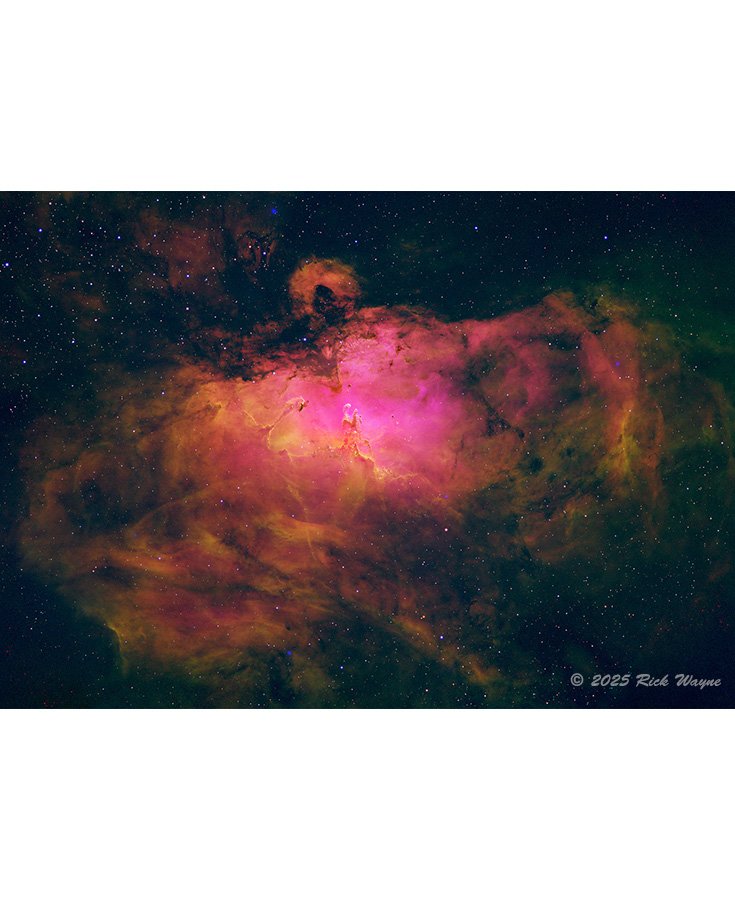 Image 1 of 2
Image 1 of 2

 Image 2 of 2
Image 2 of 2



Eagle Nebula in HSO Palette
The Eagle Nebula is a famous “star nursery” in the constellation Serpens. Number 16 on Charles Messier’s catalog, the object he described actually contains both an open star cluster and an emission nebula. At the center of the nebula are the “Pillars of Creation” immortalized by the iconic Hubble image.
For this false-color narrowband picture, I chose a different palette from the green-heavy Hubble one. Here, the most-abundant hydrogen is red, sulfur is green, and oxygen is blue. Sulfur is usually the weakest signal in 3-band imaging, but there’s quite a bit of it present, especially around the periphery. There is no region of blue, meaning that oxygen by itself is nowhere present. Instead, the pink color in the bright center of the image shows where oxygen is mixed in with the ubiquitous hydrogen.
I also captured data to present the stars in “normal” RGB color, but decided that the overwhelming number of stars in this area was too distracting and de-emphasized them in the final image.
I captured this over four nights at the Yanna Astronomical Research station, totaling about an hour and a half for each channel, with a 130mm apochromatic refractor.
The Eagle Nebula is a famous “star nursery” in the constellation Serpens. Number 16 on Charles Messier’s catalog, the object he described actually contains both an open star cluster and an emission nebula. At the center of the nebula are the “Pillars of Creation” immortalized by the iconic Hubble image.
For this false-color narrowband picture, I chose a different palette from the green-heavy Hubble one. Here, the most-abundant hydrogen is red, sulfur is green, and oxygen is blue. Sulfur is usually the weakest signal in 3-band imaging, but there’s quite a bit of it present, especially around the periphery. There is no region of blue, meaning that oxygen by itself is nowhere present. Instead, the pink color in the bright center of the image shows where oxygen is mixed in with the ubiquitous hydrogen.
I also captured data to present the stars in “normal” RGB color, but decided that the overwhelming number of stars in this area was too distracting and de-emphasized them in the final image.
I captured this over four nights at the Yanna Astronomical Research station, totaling about an hour and a half for each channel, with a 130mm apochromatic refractor.